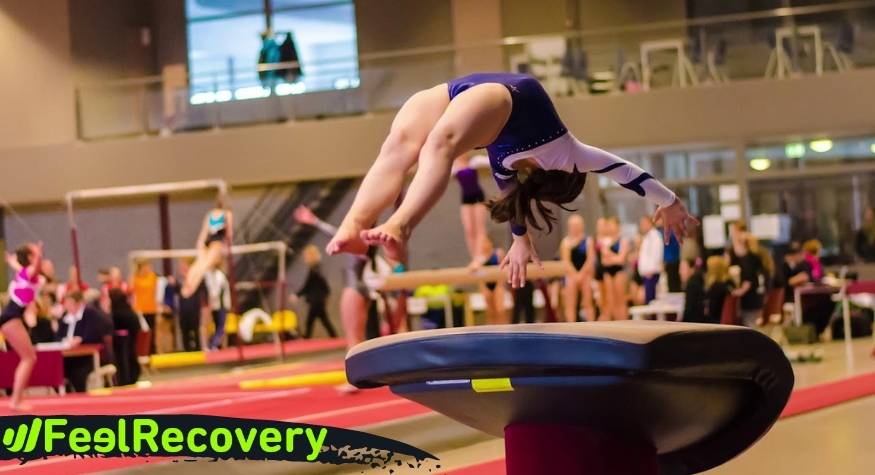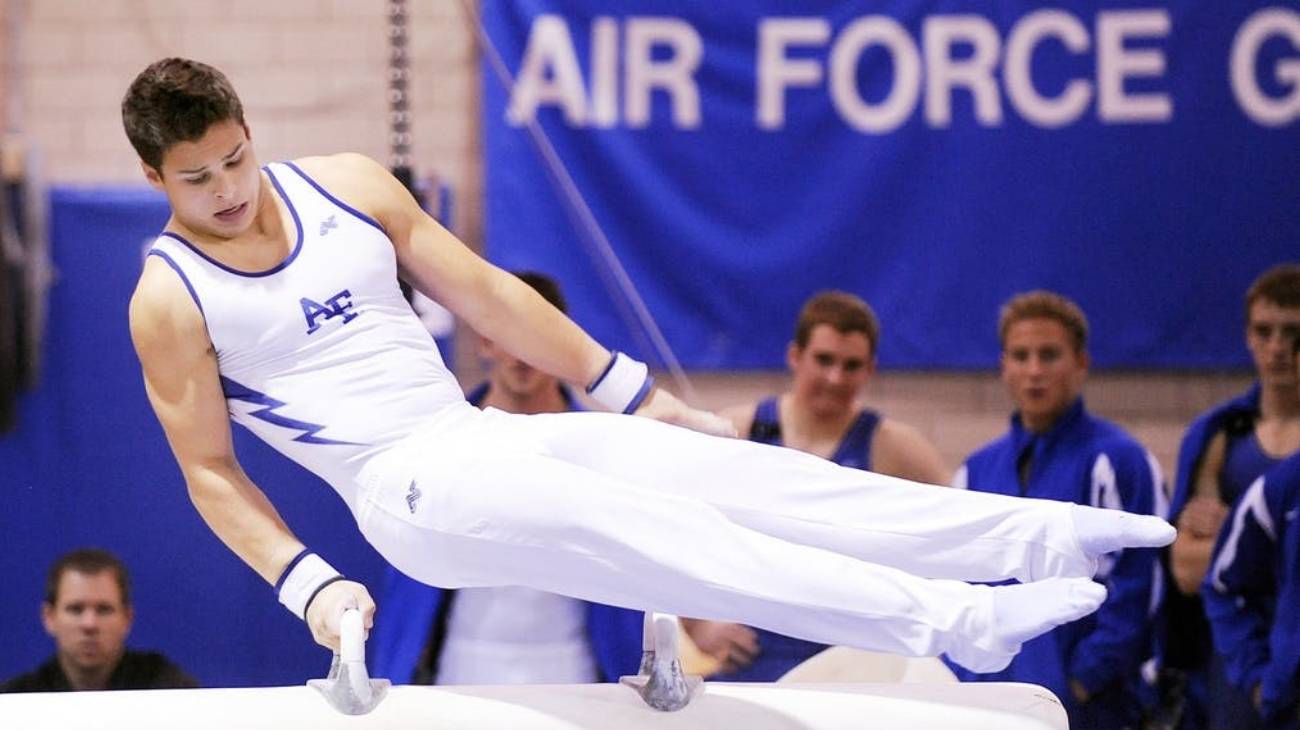Gymnasts should always prefer non-invasive physiotherapeutic treatments to treat any injury. However, there are injuries that cannot be solved with these, and surgery is the only viable option to achieve a recovery in the shortest possible time.
In this article we' ll take a closer look at the most common surgical procedures used to treat serious injuries in gymnasts, so that you'll know how to proceed and when the best way to promote your integrity is.
What are the most common types of injuries when practising gymnastics?
Although performed in the most professional way, the sport involves specific risks of injury to different parts of the body, the most common of which are listed below:
- Labral tears: can occur in any gymnastic exercise, but gymnasts who specialise in rings or bars are more vulnerable. It causes a lot of pain and requires rest, otherwise it will be aggravated and could lead to surgery.
- Wrist sprains: as the wrist is subjected to forces that exceed twice our body weight, it is common that due to poor technique it can become sprained and suffer this injury. Generally it does not go beyond a simple micro-tear in the ligaments of the joint, but in some cases it is necessary to use wrist braces or plaster casts to immobilise it.
- Epicondylitis or tennis elbow: occurs on the outside of the elbow, at its insertion with the epicondyle or external bone of the elbow, and is caused by wear or inflammation of the tendon that connects the forearm muscle to the elbow.
- Anterior cruciate ligament rupture: this is a ligament found at the level of the knee that is often torn or partially torn by a fall or overtwisting during a fall, dismount or vault. The sound of the ligament tearing can even be heard as a snapping sound followed by swelling in the joint.
- Spondylosis: the injury of most concern in the back is spondylosis, which occurs due to progressive and degenerative wear and tear of the vertebral discs and cartilage pads, causing thinning of the discs (most commonly L4 and L5). This results in vertebrae rubbing against vertebrae, causing severe pain with damage to the spinal cord and compression of the nerve roots.
Best products for gymnastic injury recovery
Bestseller
-
2 Elbow Compression Sleeve (Black/Gray)
£20,95 -
2 Elbow Compression Sleeve (Green/Navy)
£20,95 -
2 Elbow Compression Sleeve (Pink/Bordeaux)
£20,95 -
2 Knee Compression Sleeve (Green/Navy)
£20,95 -
Microwave Wheat Bag for Neck & Shoulder Pain Relief (Hearts)
£24,95 -
Microwave Wheat Bag for Neck & Shoulder Pain Relief (Oxford)
£24,95 -
Microwave Wheat Bag for Neck & Shoulder Pain Relief (Sport)
£24,95 -
Microwave Wheat Bag for Neck Pain Relief (Hearts)
£20,95 -
Microwave Wheat Bag for Neck Pain Relief (Oxford)
£20,95 -
Microwave Wheat Bag for Neck Pain Relief (Sport)
£20,95 -
Microwaveable Wheat Bag for Pain Relief (Hearts)
£20,95 -
Microwaveable Wheat Bag for Pain Relief (Oxford)
£20,95 -
Microwaveable Wheat Bag for Pain Relief (Sport)
£20,95
-
2 Ankle Compression Sleeve (Black/Gray)
£20,95 -
2 Ankle Compression Sleeve (Green/Navy)
£20,95 -
2 Ankle Compression Sleeve (Pink/Bordeaux)
£20,95 -
2 Knee Compression Sleeve (Black/Gray)
£20,95 -
2 Knee Compression Sleeve (Pink/Bordeaux)
£20,95 -
2 Thigh Compression Sleeve (Black/Gray)
£20,95 -
2 Thigh Compression Sleeve (Green/Navy)
£20,95 -
2 Thigh Compression Sleeve (Pink/Bordeaux)
£20,95 -
Foot Massage Roller for Plantar Fasciitis (Black)
£20,95 -
Foot Massage Roller for Plantar Fasciitis (Green)
£20,95 -
Foot Massage Roller for Plantar Fasciitis (Pink)
£20,95 -
Ice Massage Roller Ball (Black)
£34,95 -
Ice Massage Roller Ball (Green)
£34,95 -
Ice Massage Roller Ball (Pink)
£34,95 -
Soft Density Foam Roller for Recovery (Black)
£34,95 -
Soft Density Foam Roller for Recovery (Green)
£34,95 -
Soft Density Foam Roller for Recovery (Pink)
£34,95
How to apply the RICE therapy to treat first aid injuries in gymnastics?
Once an injury has occurred, the first few minutes are crucial, and this is where the RICE therapy, updated to PRICE, becomes vitally important. This method consists of a series of first aid measures to treat, relieve the symptoms of pain and above all prevent the injury from worsening.
- Protection: the first thing to do is to ensure that the injured area is a limb or part of the core so that it does not suffer further damage that generates more problems, and above all does not make the ailment more difficult to treat.
- Rest: as we do not know the extent of the injury, it is essential to stop moving the affected joint or muscle until we know the extent of the injury and how it will limit the gymnast's activity.
- Ice: the application of cold is intended to reduce the inflammation that appears in the first few minutes thanks to the vasoconstriction effect that it generates. In addition, it also serves as an analgesic, thus relieving pain and giving the gymnast a sense of relief.
- Compression: the aim of compression is to prevent the joint from becoming inflamed again after a few minutes, so a bandage is applied or a compression garment such as knee braces, splints or ankle braces is used.
- Elevation: once the swelling and pain are controlled, the area of injury is elevated above the level of the heart to control the blood supply.
Surgical treatments to cure severe or chronic injuries in gymnasts and athletes
When all the non-invasive mechanisms have been used for the treatment of these sports injuries, be it anti-inflammatory and analgesic drugs, immobilisation, massage, cryotherapy, thermotherapy or rest, it is time to resolve the injury surgically.
Hand and wrist injuries
Hand and wrist surgeries are usually easy to perform, but to be able to return to acrobatic activity the gymnast will need a reasonable recovery time. The most common hand and wrist injuries are:
- Surgery for acetabular labral tears: This is also known as repair of the rotator cuff that surrounds the shoulder joint. This procedure begins with an open incision or shoulder arthroscopy (smaller incision) after general anaesthesia so that the patient is fully asleep while this set of muscles and ligaments is repaired.
- Wrist arthroscopy: This surgery uses an arthroscope and very small surgical instruments to examine or repair torn tissues in or around the joint. It is a procedure that will allow the doctor to determine what problems need to be fixed in the patient's wrist without making large cuts and injuring other tissues. The patient usually feels little pain and recovers much faster than in open surgery.
- Elbow arthroscopy: is a surgery that consists of 2 or 4 incisions in the joint to insert the arthroscope that allows a complete view of the damage and repair of the affected tendons
Back injuries
The back is an extremely delicate area where surgery is usually avoided at all costs as it always involves many risks due to the large number of nerves that are lodged in it. The most common procedures are:
- Surgery for degenerative spondylolisthesis: usually performed in two parts, a decompression or laminectomy and a fusion of the spine through pedicle screws. In both cases, general anaesthesia is used and an extremely careful open operation is performed.
- Herniated disc removal: another very delicate injury in which the patient is put to sleep to remove the herniated disc lodged in one of the spinal discs. Extreme care must be taken not to damage the nerves in the disc or the patient may be left with lumbago and other back pain when returning to gymnastics.
Ankle and foot injuries
As the feet and ankles withstand all the weight and impact generated by landings, it is normal for them to suffer injuries that lead to surgery. These are relatively simple and risk-free, but the doctor's post-operative instructions should be followed as this is an area prone to infection and very slow to heal.
- Plantar fasciitis surgery: when the fascia becomes inflamed and it is impossible to relieve the pain with physiotherapy, an outpatient surgery is performed under local anaesthesia in which the tissue of the sole of the foot is cut to release accumulated tension and make the pain disappear.
- Repair of the Achilles tendon: if the tendon is completely ruptured, open surgery is performed under local anaesthesia in which stitches are placed in the tendon so that it can regenerate naturally. The rehabilitation process usually lasts several weeks.
- Repair of the fifth metatarsal: when this bone is completely broken, an open surgery is performed in which it is put back in place and fixed with pins or screws so that it can then proceed to weld naturally.
References
- Meeusen, R., & Borms, J. (1992). Gymnastic injuries. Sports Medicine, 13, 337-356. https://link.springer.com/article/10.2165/00007256-199213050-00004
- Caine, D. J., & Nassar, L. (2005). Gymnastics injuries. Epidemiology of pediatric sports injuries: individual sports, 48, 18-58. https://www.karger.com/Article/Abstract/84282
- Garrick, J. G., & Requa, R. K. (1980). Epidemiology of women's gymnastics injuries. The American journal of sports medicine, 8(4), 261-264. https://journals.sagepub.com/doi/abs/10.1177/036354658000800409
- Sands, W. A., Shultz, B. B., & Newman, A. P. (1993). Women's gymnastics injuries: a 5-year study. The American journal of sports medicine, 21(2), 271-276. https://journals.sagepub.com/doi/abs/10.1177/036354659302100218
- Caine, D., Cochrane, B., Caine, C., & Zemper, E. (1989). An epidemiologic investigation of injuries affecting young competitive female gymnasts. The American journal of sports medicine, 17(6), 811-820. https://journals.sagepub.com/doi/abs/10.1177/036354658901700616
- Cavallerio, F., Wadey, R., & Wagstaff, C. R. (2016). Understanding overuse injuries in rhythmic gymnastics: A 12-month ethnographic study. Psychology of sport and exercise, 25, 100-109. https://www.sciencedirect.com/science/article/abs/pii/S1469029216300516
- Zetaruk, M. N., Fors, M. V., Zurakowski, D., Mitchell Jr, W. A., & Micheli, L. J. (2006). Injuries and training recommendations in elite rhythmic gymnastics. Apunts: Medicina de l'esport, 100-106. https://www.raco.cat/index.php/Apunts/article/view/164833
- Daly, R. M., Bass, S. L., & Finch, C. F. (2001). Balancing the risk of injury to gymnasts: how effective are the counter measures?. British Journal of Sports Medicine, 35(1), 8-19. https://bjsm.bmj.com/content/35/1/8.short
- Sands, W. A. (2000). Injury prevention in women’s gymnastics. Sports medicine, 30, 359-373. https://link.springer.com/article/10.2165/00007256-200030050-00004
- Bradshaw, E. J., & Hume, P. A. (2012). Biomechanical approaches to identify and quantify injury mechanisms and risk factors in women's artistic gymnastics. Sports Biomechanics, 11(3), 324-341. https://www.tandfonline.com/doi/abs/10.1080/14763141.2011.650186



















































































